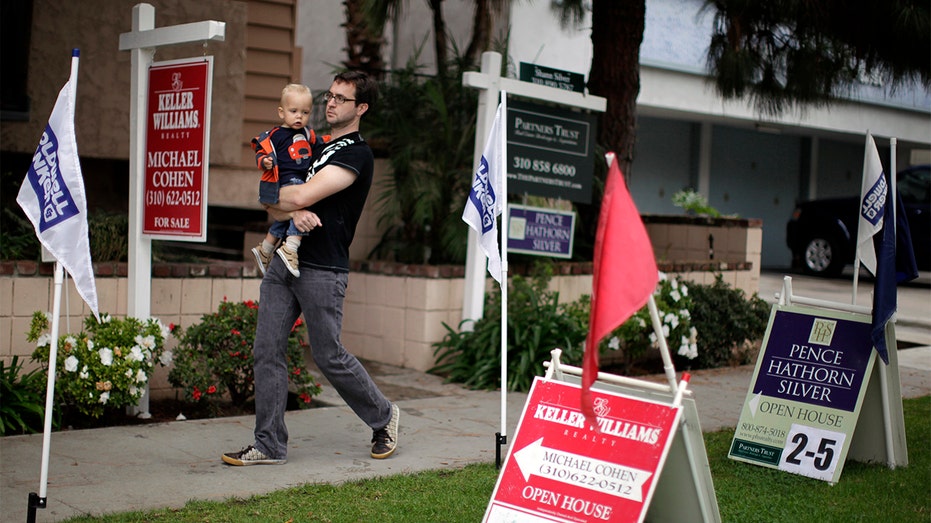Home prices surged nearly 19% last year, marking highest read ever
Low interest rates and low inventory drove the increase in demand
Wall Street to blame for sky-high home prices: Jeff Sica
Circle Squared Alternative Investments founder Jeff Sica weighs in on Disney’s real estate development and Wall Street’s involvement in the housing market.
Home prices climbed at the highest pace on record in 2021, surging nearly 19% during the year of red-hot demand driven by low interest rates and low inventory.

Homes are seen for sale in the northwest area of Portland, Oregon. (REUTERS/Steve Dipaola/Files / Reuters Photos)
| Ticker | Security | Last | Change | Change % |
|---|---|---|---|---|
| DHI | D.R. HORTON INC. | 151.97 | -3.14 | -2.02% |
| TOL | TOLL BROTHERS INC. | 139.16 | +0.49 | +0.35% |
| LEN | LENNAR CORP. | 112.19 | -5.41 | -4.60% |
The S&P CoreLogic Case-Shiller National Home Price Index report released Tuesday showed December's year-over-year gain hit 18.8%, the largest annual price spike the index has seen since it was launched in 1987.
RENTS REACH ‘INSANE’ LEVELS ACROSS US WITH NO END IN SIGHT
"This is the highest calendar year increase in 34 years of data, and substantially ahead of 2020’s 10.4% gain," S&P DJI managing director Craig Lazzara said in a statement.
"We have previously suggested that the strength in the U.S. housing market is being driven in part by a change in locational preferences as households react to the COVID pandemic," Lazzara noted.

A realty company's signs rest on several lawns in front of newly constructed houses in Brandon, Miss. (AP Photo/Rogelio V. Solis, File / AP Newsroom)
"More data will be required to understand whether this demand surge simply represents an acceleration of purchases that would have occurred over the next several years rather than a more permanent secular change," he continued, adding, "In the short term, meanwhile, we should soon begin to see the impact of increasing mortgage rates on home prices."
HOUSING INFLATION, SUPPLY CHAIN CREATE BUILDERS' PERFECT STORM
Competition in the housing market remains steep as prospective buyers become increasingly willing to shell out more to make a deal with interest rates on the rise. The average price for a 30-year fixed-rate mortgage is approaching 4%, according to Freddie Mac's latest numbers.
Existing home sales declined in December but rebounded by 6.7% in January, leaving behind the lowest inventory on record according to the National Association of Realtors' latest data.

A man walks past open house signs in front of condominiums for sale in Santa Monica, California. (REUTERS/Lucy Nicholson / Reuters Photos)
GET FOX BUSINESS ON THE GO BY CLICKING HERE
Meanwhile, the trends are pushing more and more would-be buyers out of the market at lower price points. According to the NAR, the percentage of first-time buyers responsible for sales dropped to 27% last month, down from 30% in December.





















